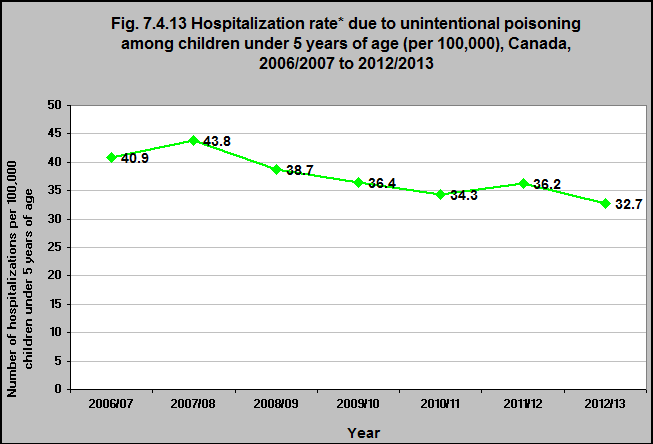Hospitalization rate due to unintentional poisoning among children under 5 years of age (per 100,000), Canada, 2006/2007 to 2012/2013

Note: *Hospitalization rate is the number of inpatient hospital discharges. Hospital discharge is defined as the release of a patient who has stayed at least one night in hospital. It includes deaths in hospital following inpatient care. Same-day discharges are usually excluded.
Source: CICH graphic created using data adapted from the Discharge Abstract Database (DAD), Canadian Management Information System Database Metadata (CMDB), Canadian Institute for Health Information. Retrieved from Injury Data Dashboard, The Canadian Atlas of Child & Youth Injury Prevention, 2016. http://injuryevidence.ca/visualizations/injury-hospitalizations-data/ -accessed June 20, 2017.
The hospitalization rate among children under 5 due to unintentional poisoning fell from 40.9 per 100,000 children in 2006/07 to 32.7 in 2012/13.
Implications
Poisoning in young children is most often caused by medications.1 Child resistant containers have made a significant impact on reducing childhood poisonings. That is why it is very important to keep medications stored in their original packaging. However, sometimes children can get into these packages – so they should also be stored out of the reach of children – preferably in a locked cabinet.
Disposing of unused/expired medication is also an important strategy to decrease children’s access to medications. Most pharmacies in Canada accept consumers’ medication for proper disposal.
1Parachute. 2016. Poisoning hospitalizations data. http://injuryevidence.ca/visualizations/poisoning-hospitalizations-data/ -accessed June 21, 2017.
